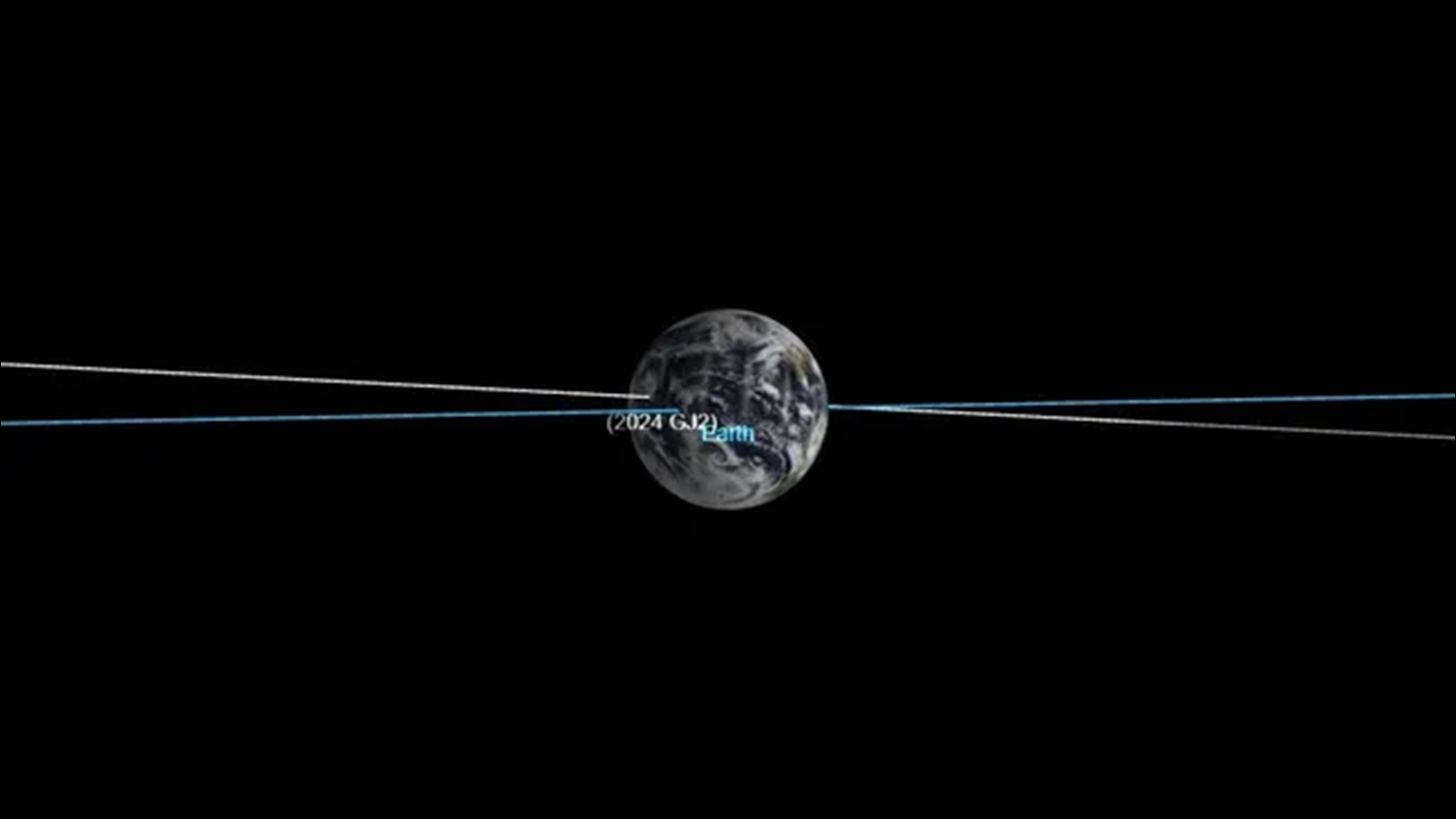Car-size asteroid discovered 2 days ago flies by Earth at 1/30th the distance of the moon
A newly discovered asteroid got within 12,000 miles of Earth on a harrowing, ultra-close approach today. The space rock won't return for 70 years.

An asteroid discovered Tuesday (April 9) made an extremely close, but harmless, pass by planet Earth today (April 11).
Asteroid 2024 GJ2 is roughly the size of a car and, since its discovery this week, astronomers calculated that the space rock would graze by Earth at a mere 12-thousand-mile (19.3-thousand-kilometer) distance — that's just three percent the distance between the Earth and the moon. 2024 GJ2 measures between 2.5 and 5 meters (8.2 and 16 feet), according to the European Space Agency (ESA). This means it's an asteroid with a weight-class that would have burned up in Earth's atmosphere, if its orbit happened to intersect ours more directly.
Astronomers believe the asteroid's closest approach distance to Earth occurred at 2:28:42 p.m. EDT (18:28:42 GMT) on Thursday, at a distance of 7,641 miles (12,298 kilometers).
Related: 'Planet killer' asteroids are hiding in the sun's glare. Can we stop them in time?
The next closest flyby of 2024 GJ2 won't occur until 2093, according to ESA's near-Earth objects coordination center. When that happens, the asteroid won't pass nearly as close as it did today. GJ2's 2093 approach is estimated to fly as close as 127,970 miles (205,947 kilometers) to us — 10 times further than today's flyby, and just over half the distance between Earth and the moon.
NASA has cataloged nearly 35,000 near-Earth asteroids to date, though very few of those pose any threat to the planet.
Originally posted on Space.com.
Sign up for the Live Science daily newsletter now
Get the world’s most fascinating discoveries delivered straight to your inbox.
Josh Dinner is Space.com's Content Manager. He is a writer and photographer with a passion for science and space exploration, and has been working the space beat since 2016. Josh has covered the evolution of NASA's commercial spaceflight partnerships, from early Dragon and Cygnus cargo missions to the ongoing development and launches of crewed missions to the International Space Station, and spent much of 2022 chronicling the epic of NASA's Artemis 1 rocket. He also enjoys building 1:144 scale models of rockets and human-flown spacecraft. Find some of Josh's launch photography on Instagram and at his website, and follow him on Twitter, where he mostly posts in haiku.










